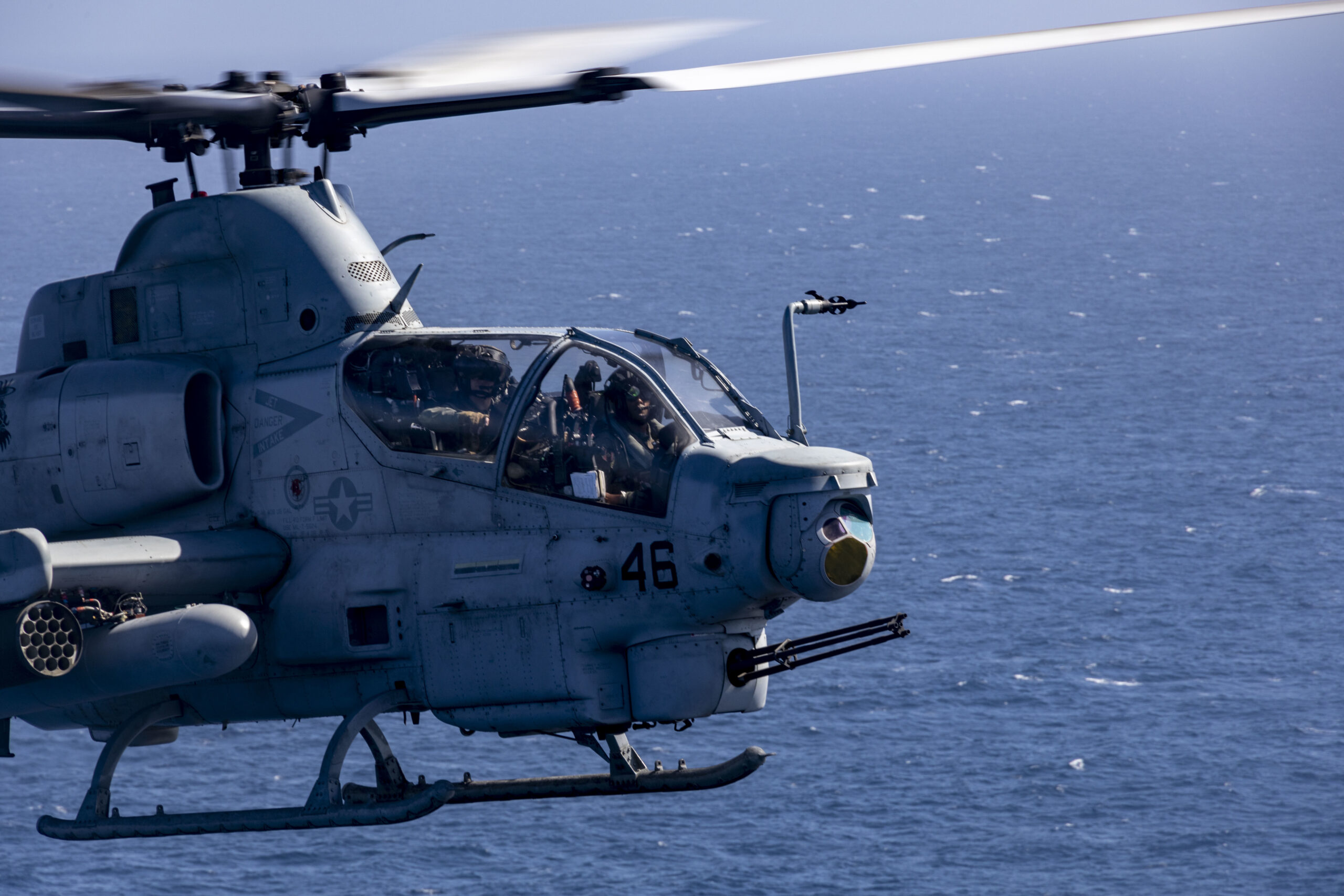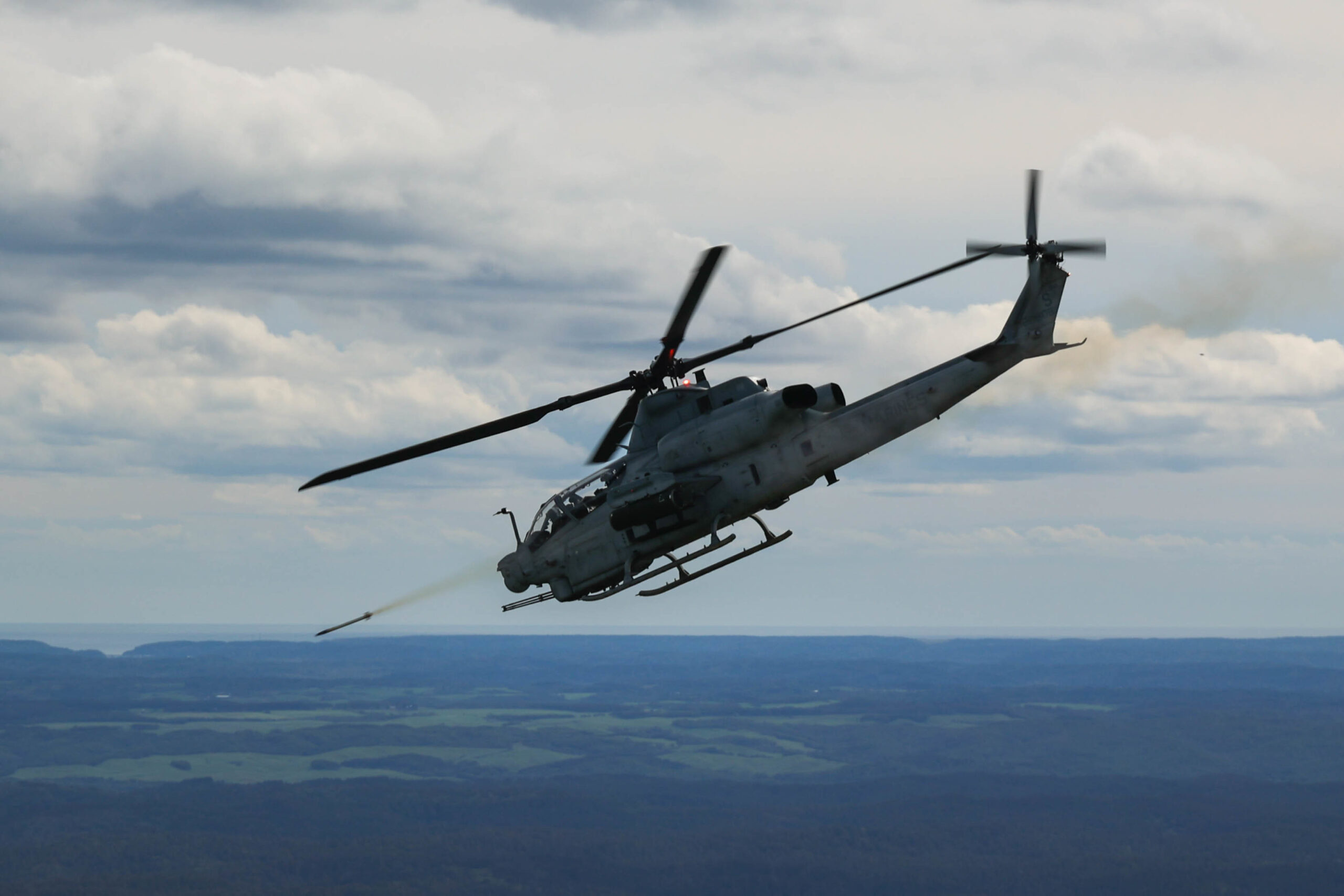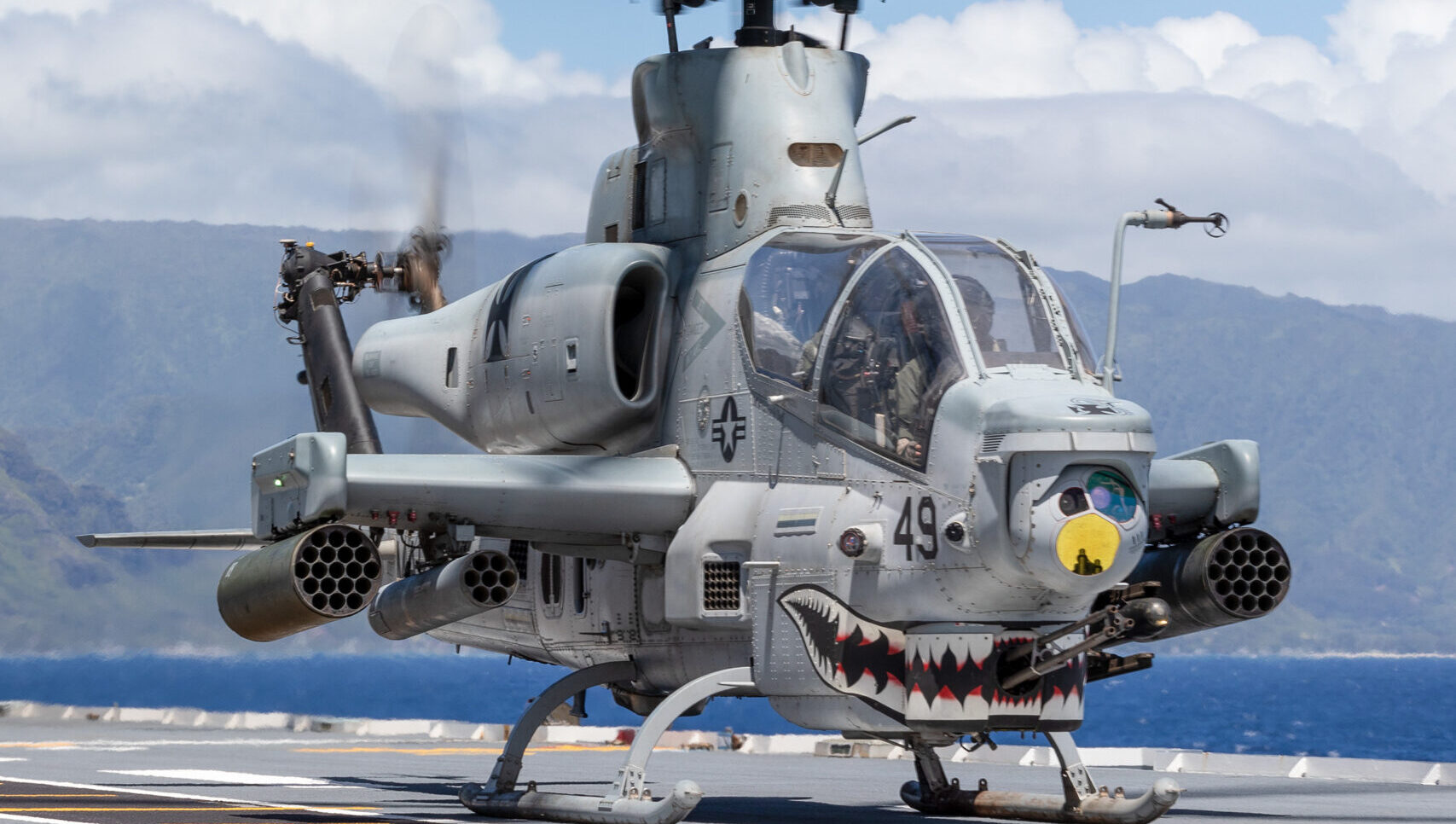The final AH-1Z for the U.S. Marine Corps rolled off Bell’s assembly line in Amarillo, Texas, on Nov. 2. The occasion marks the end of an era for Bell, which began building the UH-1 Huey 60 years ago, but is far from the end of the H-1’s combat service with the Marines, who plan to fly them for decades. The military and Bell refer to both the AH-1 attack helicopter and the UH-1 Huey as the H-1 family of aircraft because the AH-1 was designed from the UH-1 and both still share a great deal of common parts, despite their different, but related roles.
Bell marked the delivery of the 189th AH-1Z Viper attack helicopter to the Marines on Wednesday at its Amarillo plant. The aircraft is headed to Marine Light Attack Helicopter Training Squadron 303 (HMLAT-303) with Marine Aircraft Group 39, 3rd Marine Aircraft Wing, at Marine Corps Air Station Camp Pendleton, California.
That helicopter completes the service’s program of record for the latest version of the H-1 aircraft that entered service in 1962. The final UH-1Y Venom – the most advanced member of the Huey family – was delivered in 2018, bringing the combined program of record for the two aircraft to 349 helicopters. Bell continues to capitalize on the H-1/Huey brand though both the attack and utility models have evolved substantially since famed usage in the Vietnam War.

The most-modern UH-1Y and AH-1Z sport four rotor blades instead of the original two and are both twin-engine aircraft. Bell has driven to keep the Ah-1 and UH-1 designs to be as common as possible, to alleviate the logistics burden of fielding, maintaining and stocking spare parts for both the utility and attack variants. The most modern versions of the H-1 helicopters share 85 percent of their parts in common, mostly in terms of powertrain, sub-systems, and to a degree, avionics.
Between the U.S. military, other government agencies, and foreign military sales customers, Bell has built more than 16,000 H-1s since 1959, said Mike Deslatte, Bell H-1 vice president and program director.
“It’s an iconic platform,” Deslatte said during a call with reporters on Nov. 1. “It changed the way militaries around the world fight and support the infantry on the ground. I think there’s a lot of iconic imagery that comes to mind in the Vietnam era, in the Gulf War, in Afghanistan and Iraq, for military aviation, rotorcraft aviation, and the Huey and the H-1 platform are sort of synonymous. … It’s a monumental occasion.”
During the Vietnam War, the U.S. Army air cavalry, as well as other units, employed the UH-1 Huey to such an extent that the conflict became known as the “helicopter war.” In newsreels, television, and film, the Huey became an icon of the war.

Army aviation units eventually traded in their Hueys for the larger UH-60 Black Hawk in the 1980s. The Marine Corps first ordered H-1s in 1962 and has continued to fly them in various configurations since. In 1966 Bell created the AH-1 Cobra as the first dedicated gunship. Four years later, the Bell UH-1N brought twin-engine capabilities to more than 28 countries, and in 1984 the AH-1W provided the U.S. Marine Corps with increased attack helicopter capability.
The UH-1Y achieved initial operating capability in 2008, followed by the AH-1Z in 2011. The first combined Viper/Venom deployment with a Marine Expeditionary Unit occurred in 2009. Since the first delivery of the AH-1Zs and UH-1Ys to the U.S. Marines, the H-1 mixed fleet has accumulated more than 450,000 flight hours in various missions. Bell will continue to support the U.S. H-1s with lethality, survivability, and reliability upgrades through a long-term modernization plan. Even given their upgraded capabilities, the Marine Corps has begun placing dozens of both H-1 designs in long-term storage as part of an ongoing force redesign. The service decided to curtail almost all standard helicopter operations, including decommissioning relatively young AH-1Zs, in Hawaii in a bid to promote operational flexibility in the Pacific region.
“H-1s are key to the 2022 Marine Corps Aviation Plan,” said Col. Vasillios Pappas, the Marine Corps light/attack helicopters program manager (PMA-276). “With the U.S. program of record now complete, the Marines have the flexibility to manage and deploy the helicopters based on current and future mission requirements as established at the start of the program.”
The Marine Corps has since retired all previous versions of the UH-1 and AH-1, in favor of the Venom and Viper variants that are now in service.

Production of the H-1 series will not conclude with the delivery of the final Marine Corps aircraft. Bell is hoping that ongoing foreign military sales will keep the line alive and humming at least for a few more years, Deslatte said. Bell is already building 12 AH-1Zs for Bahrain and has orders to manufacture eight UH-1Ys and four AH-1Zs for the Czech Republic beginning in 2023. Deslatte said Bell has built about half of Bahrain’s aircraft.
“While this is the end of the program of record for the United States Marine Corps, it really represents a transition to foreign military sales as the focus on our production line here in Amarillo,” Deslatte said. “For the last several years, we’ve had a mixed production line of both FMS customer aircraft and our U.S. Marine Corps aircraft. But with this aircraft leaving Amarillo tomorrow, we will have only FMS aircraft on our production line here at Bell. In addition to new production aircraft builds, we continue to be an integral part of the United States Marine Corps capability roadmap and the H-1 platform. We continue to work together with NAVAIR on developing additional capabilities for these aircraft to keep them relevant and flying for the next several decades.”
Delivery of the final H-1 for the Marine Corps means that the service has all of the advanced AH-1Z and UH-1Y aircraft it has ordered. The helicopters will, in all likelihood, remain in service, as Deslatte said, for decades. Over that time, they will continue to receive incremental upgrades to mission equipment and other systems.
The Marine Corps has plans to replace its fleet of light and medium attack and utility aircraft sometime starting in the 2030s. It is tracking the Army’s Future Vertical Lift (FVL) effort to develop a family of advanced rotorcraft that are speedier and more maneuverable than conventional helicopters. While the Marine Corps does not have an official FVL program for replacing the H-1 family, the Navy has rafted up to the Army’s effort with the Maritime Strike aircraft that will replace the MH-60R/S Sea Hawk.
The end of the H-1 production for the U.S. military happens as the world ponders the effectiveness of helicopters in modern combat. Experiences of both sides in the war in Ukraine have brought into question whether conventional rotorcraft are survivable in future conflicts. With this in mind, and with some of these ‘new’ helicopters already put in storage, it will be interesting to see how long the iconic H-1 remains relevant over the battlefield.
Contact the author: Dan@thewarzone.com
